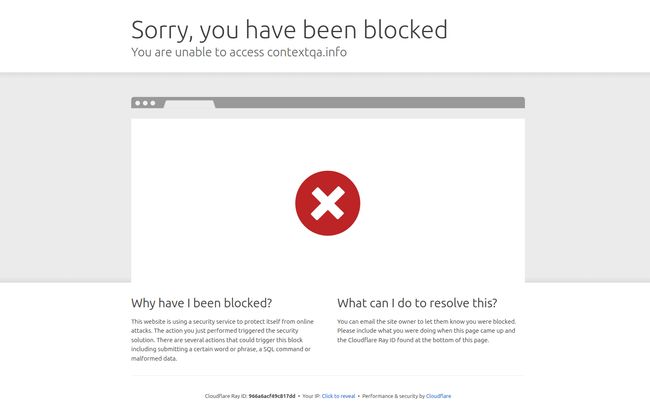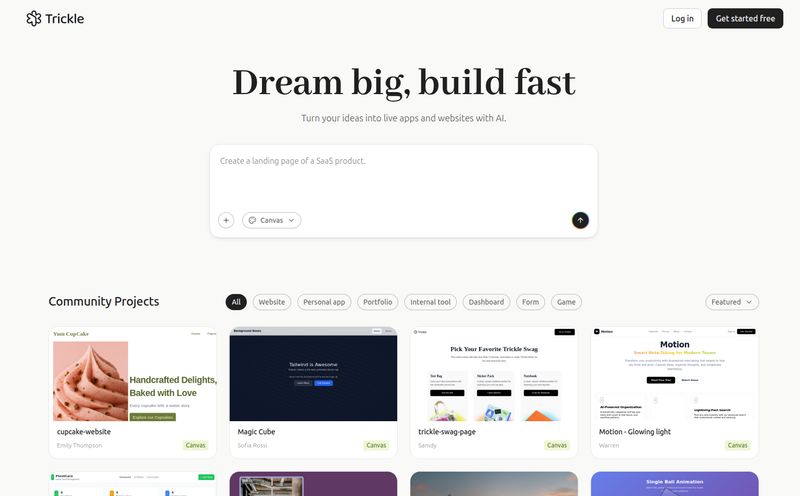If you're in the software world, you've got a testing backlog. It’s that ever-growing pile of tasks that feels less like a to-do list and more like a digital doom pile in the corner of your project management tool. Every manual test you run, every bug that slips through to production… it just adds to the weight. We've all been there, burning the midnight oil before a big release, fueled by coffee and sheer panic.
For years, the solution has been “automate everything!” But that came with its own set of problems. You needed specialized developers, complex frameworks, and a whole lot of time to build and maintain the automation scripts. It was trading one headache for another. But the landscape is shifting. I've been keeping a close eye on the no-code and AI-driven tool space, and every now and then, something pops up that makes me sit up and pay attention. Today, that something is called ContextQA.
The promise is a big one: turn months of that testing backlog into just hours of efficient, automated work. A bold claim. So, let’s see if it holds up.
So, What is ContextQA Supposed to Be?
At its heart, ContextQA is an AI-powered software test automation platform. That’s a mouthful, I know. Think of it this way: it’s a tool designed to let you automate the testing of your web applications without having to write a single line of code. It’s aimed squarely at QA teams who are bogged down by repetitive manual testing, and maybe at dev teams in smaller shops who have to wear the QA hat themselves.
The core idea is to make test automation accessible to everyone on the team, not just the folks who speak Selenium or Cypress fluently. By using a visual, no-code interface and sprinkling in some AI magic, it aims to drastically cut down the time it takes to create, run, and analyze software tests.
The Features That Actually Caught My Eye
Any new tool can throw a bunch of features on a landing page. But as someone who's seen a lot of vaporware, I look for the things that solve real, tangible problems. Here’s what stood out to me about ContextQA’s offering.
Finally, No-Code That Doesn't Feel Like a Toy
The “no-code/low-code” movement has been a mixed bag, right? Some tools are fantastic, others are… limiting. ContextQA’s approach seems to hit a sweet spot. It empowers manual testers and business analysts—the people who know the product inside and out—to build robust automation suites themselves. This isn't just about saving developers' time; it's about empowering the people closest to the user experience to own quality. That’s a powerful shift.
An AI Detective for Your Bugs
Here’s the part that gets me a little excited, despite my natural skepticism for anything branded 'AI'. ContextQA boasts an AI-Powered Root Cause Analysis. Instead of a test just failing and telling you “element not found,” the AI tries to figure out the why. Was it a network error? A change in the UI? A backend API failure? Getting that initial diagnosis can save a developer hours of frustrating detective work. It’s like having a junior assistant who does the initial legwork for you.
Seeing is Believing with Visual Regression
Ever had a CSS change on one page completely wreck the layout on another, and you didn't catch it until a customer complained? Yeah, me too. Visual regression testing is the antidote. It takes pixel-by-pixel snapshots of your app and compares them between builds, flagging any unintended visual changes. For teams obsessed with UI/UX consistency, this is non-negotiable. It’s a feature that used to be a pain to set up on your own, so having it integrated is a massive plus.
My Little Adventure Trying to Check Them Out
Okay, so here's a bit of a funny story. As part of my process, I always go directly to the source. I wanted to poke around their website, maybe find a demo or some more in-depth documentation. So I typed in their URL, hit enter, and… was promptly blocked.
Yep. A big, bold “Sorry, you have been blocked” screen from Cloudflare. I have to admit, I chuckled. Is their security so good that it blocked a curious SEO blogger? Maybe my IP looked suspicious that day. Who knows. It’s a bit ironic for a company focused on quality assurance, but hey, nobody’s perfect. It’s a good reminder that even the tech companies have tech problems. Maybe they were testing their security rules and I was just an unwilling participant!
The Good, The Bad, and The Realistic
Every tool has its highs and lows. It's never a silver bullet. Based on the information out there, here's my breakdown of ContextQA.
| The Good Stuff | The Reality Check |
|---|---|
| Accessible to All: The no-code approach is a genuine game-changer for teams without dedicated automation engineers. | Setup Isn't Magic: You'll likely need some initial time and effort to configure it and integrate it into your CI/CD pipeline. |
| AI-Accelerated Insights: The root cause analysis can genuinely speed up the bug-fixing cycle. Time is money, after all. | Garbage In, Garbage Out: The tool is only as good as your test cases. Poorly designed tests will still yield poor results. |
| No Vendor Lock-In: This is HUGE. The ability to export your tests to open-source frameworks like Selenium means you're not trapped. You can leave anytime and take your work with you. I have so much respect for companies that do this. It shows confidence in their product. | There's a Learning Curve: While it's no-code, users still need to understand the fundamentals of good test design and automation strategy. |
Let's Talk Money... Or Not?
When it comes to pricing, ContextQA is playing it a bit close to the chest. Their model is described as a “scalable and flexible pay-as-you-go” system. I couldn't find a public pricing page, which usually means you have to contact them for a demo and a custom quote.
This is a pretty common strategy for B2B SaaS, but it's a personal pet peeve of mine. I like transparency. The pay-as-you-go model is great, in theory, as it means you're only paying for what you use, which is ideal for startups or teams with fluctuating testing needs. But without seeing the numbers, it's hard to judge the value. You'll have to reach out to them directly to see if it fits your budget.
FAQs about ContextQA
-
Do I need to be a programmer to use ContextQA?
Nope. It's built on a no-code/low-code foundation, so it's designed specifically for manual QA testers, business analysts, and anyone who understands the application, regardless of their coding ability.
-
What is 'visual regression testing'?
It's a feature that automatically detects unintended visual changes in your user interface. It compares screenshots of your web pages before and after code changes to catch things like broken layouts, incorrect fonts, or color issues.
-
What does 'no vendor lock-in' mean?
It means you can export the tests you create in ContextQA into an open-source format. If you ever decide to stop using the tool, you don't lose all your work. You can take your test scripts with you, which is a massive advantage and a sign of a customer-friendly company.
-
Is ContextQA suitable for small startups?
It seems so. The pay-as-you-go model and the ability to empower non-developers to handle automation could be very cost-effective for a small team where everyone wears multiple hats.
-
What kind of integrations does it support?
It offers comprehensive integration with popular development tools. While the specifics aren't listed, this typically means it can plug into CI/CD pipelines like Jenkins, GitLab CI, project management tools like Jira, and communication platforms like Slack.
So, What's the Verdict?
Despite my little adventure getting blocked from their site, I'm cautiously optimistic about ContextQA. The problems it's trying to solve are very, very real. The pain of manual testing, the high barrier to entry for traditional automation, and the black hole of bug investigation are things that keep developers and QA pros up at night.
The combination of a user-friendly no-code interface with smart, practical AI features and—most importantly—a commitment to avoiding vendor lock-in makes it a compelling option. It's not a magic wand, and you'll still need to bring your testing knowledge to the table. But it has the potential to be a powerful ally in the never-ending war against bugs.
If your team is drowning in a testing backlog, I'd say ContextQA is definitely worth a look. Just, uh, hope you have better luck accessing their website than I did.
Reference and Sources
- The tool's official website (when it's accessible): https://contextqa.info




